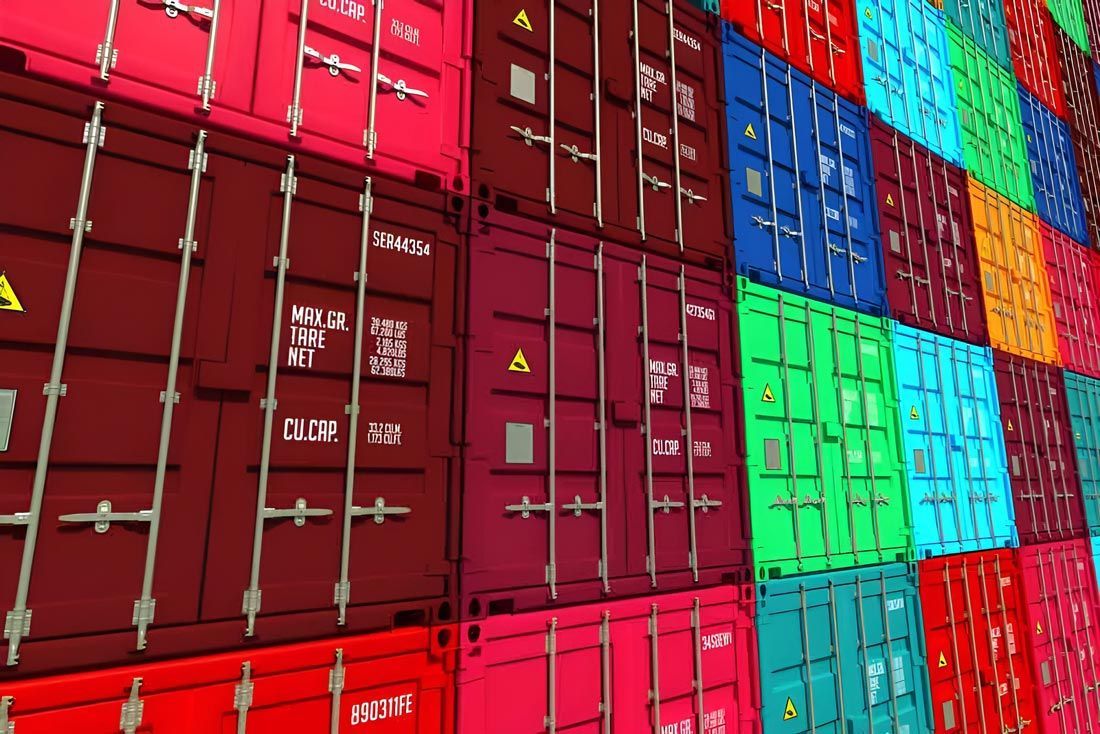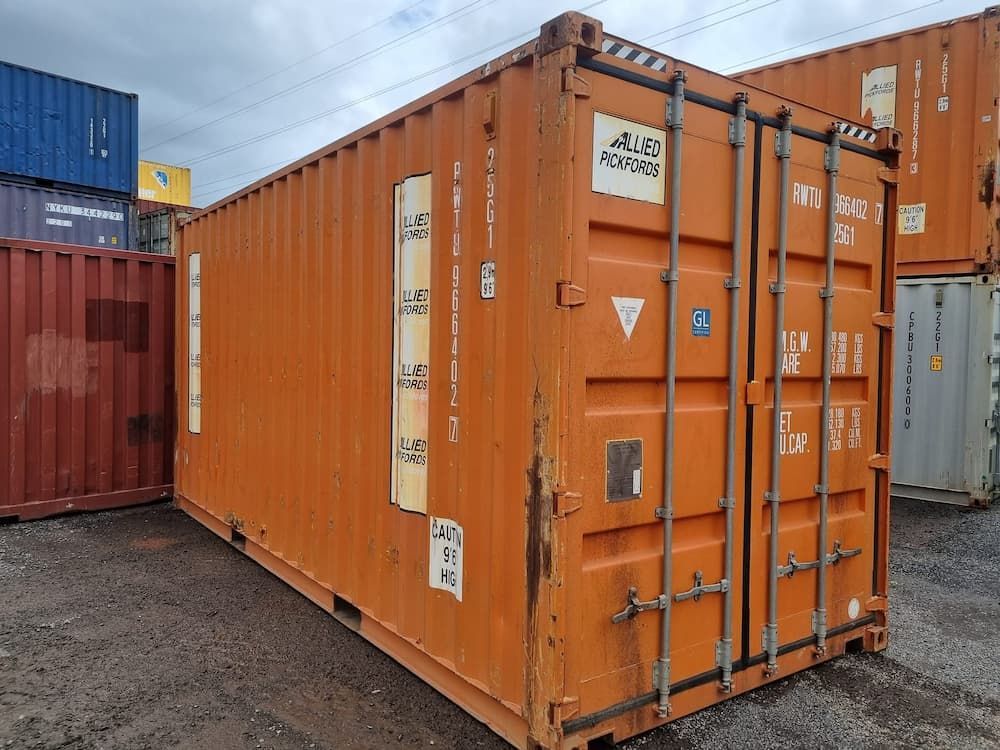How to Safely Store Your Belongings in Shipping Containers
Whether you’re decluttering your home, moving between properties or securing equipment for your business, shipping containers offer a versatile and weather-resistant solution for storage. With the Sunshine Coast’s variable climate—from high humidity to heavy rainfall—storing your belongings safely involves more than just stacking boxes in a metal box. It means preparing the container properly, organising your goods strategically, and keeping environmental and security risks in check. Here’s how to make sure your storage container works in your favour.
Choose the Right Container Size & Condition Before You Pack
Getting started with storage means choosing the right container. Shipping containers come in standard lengths—typically 20ft or 40ft—and can be new or second-hand. While both options can offer reliable protection, inspecting the unit before use is essential.
- Inspect the interior and exterior for signs of rust, especially around doors, corners and the base.
- Ensure the floor is free of rot, soft spots or gaps that could allow water ingress.
- Check the rubber door seals are flexible and fully intact, ensuring the container remains watertight.
- Make sure locking bars operate smoothly and close flush with the doors.
- Select a size appropriate to the volume of your belongings, allowing room for airflow and access.
Choosing a structurally sound container with enough space sets a solid foundation for long-term, damage-free storage.
Prevent Moisture Damage with Proper Ventilation & Desiccants
Shipping containers, while generally sealed from outside water, can be susceptible to condensation. This is especially true in coastal areas like the Sunshine Coast, where high humidity and temperature changes can result in internal dampness.
- Use built-in vents to encourage airflow and prevent the buildup of trapped moisture.
- Place desiccant packs, moisture absorbers or silica gel tubs throughout the container.
- Consider a container with a whirlybird vent or install one to improve passive ventilation.
- Never store wet or damp items like freshly washed textiles or equipment with residual water.
Reducing humidity from within helps preserve the quality of fabrics, electronics, and paper, often the first to be affected by internal condensation.
Elevate & Cover Your Items to Avoid Water Ingress
Even with a watertight container, rainwater and condensation can still present a risk, especially to items stored directly on the steel floor. Adding layers of separation is a simple but effective strategy.
- Stack belongings on wooden pallets or plastic risers to keep them off the floor.
- Cover large items and boxes with waterproof plastic sheeting to shield against overhead drips or damp air.
- Leave a small gap between boxes and walls to improve air circulation and prevent moisture traps.
- For added protection, store sensitive items inside sealed plastic tubs instead of cardboard boxes.
Keeping your belongings lifted and shielded ensures accidental leaks or condensation puddles won’t cause costly damage.
Pack Strategically to Maximise Space & Prevent Shifting
Packing a storage container is as much about safety as it is about efficiency. Poorly packed containers can lead to falling items, broken contents and an overall chaotic experience.
- Start with the heaviest items at the back and bottom to build a stable base.
- Stack lighter or fragile boxes on top, keeping weight evenly distributed to avoid pressure damage.
- Secure large furniture or white goods using tie-down straps or ropes attached to the container’s lashing points.
- Use shelving units if you plan to access items regularly or want to keep smaller boxes organised.
A logical and secure layout helps avoid damage while making the most of your storage footprint.
Use Pest Control Measures to Keep Your Goods Safe
Pests such as mice, cockroaches and ants are an ever-present concern in storage, particularly in regional or outdoor settings. While containers are sealed, they’re not impervious.
- Block any small holes or entry points with silicone or expanding foam sealant.
- Place rodent bait or non-toxic pest repellent near entry points, corners and along walls.
- Avoid storing food, pet products or perishables, which can attract insects and vermin.
- Periodically inspect your container’s interior for droppings, insect nests or gnaw marks.
Keeping your container pest-free is critical for protecting textiles, papers, furniture and stored equipment.
Label & Create an Inventory for Easy Access
It’s not just about how well you store your belongings—it’s also about how easily you can find them again. A clear labelling system speeds up retrieval and prevents unnecessary repacking or damage.
- Label every box clearly on multiple sides with its contents and the room of origin.
- Keep a digital or printed inventory list noting where items are stored inside the container.
- Group similar items together—kitchenware, documents, tools, seasonal décor—for logical placement.
- Leave a clear central aisle (if space allows) to access boxes without removing others.
Labelling and inventories are particularly useful if you’re using your container for seasonal, long-term or business storage.
Secure the Container Against Theft & Unauthorised Access
A steel container offers excellent physical protection—but it’s only as secure as the measures you take. If you’re storing valuables or placing the container outdoors, security should be a top priority.
- Use a high-quality padlock in a lockbox to shield it from tampering or bolt cutters.
- Position the container in a well-lit, visible area if possible, to deter thieves.
- Use external fencing, CCTV or an alarm system if storing sensitive or high-value goods.
- Keep the doors shut and locked at all times when unattended, even if stored on private property.
Secure storage isn’t just about theft prevention—it’s about maintaining peace of mind.
Maintain Regular Checks & Insurance Coverage
Storage containers can sometimes become “out of sight, out of mind.” But ongoing checks are crucial, particularly in outdoor locations or for long-term use.
- Inspect the container monthly for signs of damage, rust, water ingress or pest intrusion.
- Look out for changes in the smell or moisture levels inside the unit.
- Reseal any compromised door rubbers or repaint worn exterior areas to prevent corrosion.
- Review your insurance policy to ensure your stored contents are covered, especially if the container is on-site rather than in a storage yard.
Regular attention keeps your stored goods protected and ensures early intervention if issues arise.
Let’s Keep Your Goods Safe
At East Coast Containers, we provide durable, versatile shipping containers for hire and sale on the Sunshine Coast. Whether you're storing household furniture, business stock or personal possessions, our range of weatherproof containers offers a practical, secure solution for all types of storage needs.
Ready to get started? Call us or visit our
contact page to request a quote or discuss your storage requirements. We're here to ensure your items stay protected—rain, shine, or storm.












